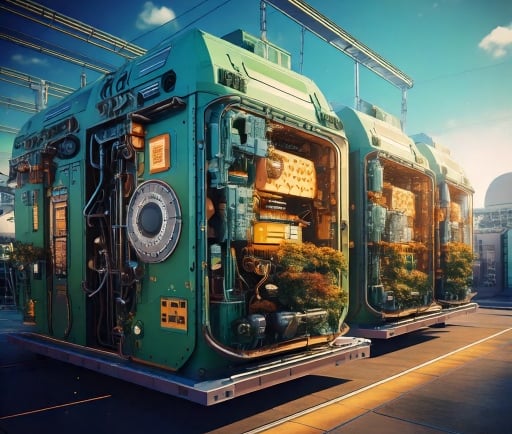Harnessing Clean Energy: The Power of Modular Nuclear Pods in AI Development


Introduction
The increasing demand for sustainable and efficient energy sources has led to innovative solutions in the power sector. Among these solutions, modular nuclear pods are emerging as a pivotal technology, particularly in their ability to provide clean energy to facilitate advancements in artificial intelligence (AI). This blog post explores how these modular nuclear pods operate and the significant advantages they offer in powering AI systems sustainably.
Understanding Modular Nuclear Pods
Modular nuclear pods are compact and scalable nuclear reactors designed to generate electricity while minimizing environmental impact. They offer a revolutionary approach compared to traditional nuclear power plants. These pods can be deployed in various locations ranging from rural areas to urban centers, ensuring that energy production is both efficient and tailored to specific community needs.
One of the key benefits of modular nuclear pods is their low carbon footprint. By harnessing fission to create energy, these units significantly reduce greenhouse gas emissions compared to fossil fuels. This shift to cleaner energy sources is vital in the ongoing battle against climate change, as it aligns with global initiatives aimed at achieving net-zero emissions.
The Role of Clean Energy in AI
Artificial intelligence is rapidly transforming various industries, requiring substantial computing power to process vast amounts of data. This significant energy demand necessitates a sustainable and reliable energy source. Modular nuclear pods fit this requirement perfectly, offering a consistent power supply while ensuring that energy consumption is both efficient and eco-friendly.
By powering AI operations with clean energy produced from modular nuclear pods, we can support the development of technologies that rely on machine learning and big data analysis without compromising environmental integrity. Furthermore, the consistency of energy supply from these pods can enhance the performance of AI models, enabling them to run more efficiently and reliably.
Conclusion
In conclusion, modular nuclear pods provide a promising solution for achieving clean energy while simultaneously supporting the growth of artificial intelligence technologies. Their efficient, scalable design offers a pathway for sustainable energy that aligns with both technological advancements and environmental goals. As we continue to explore innovative practices in energy production, modular nuclear pods will undoubtedly play a crucial role in shaping a greener future for AI and beyond.
